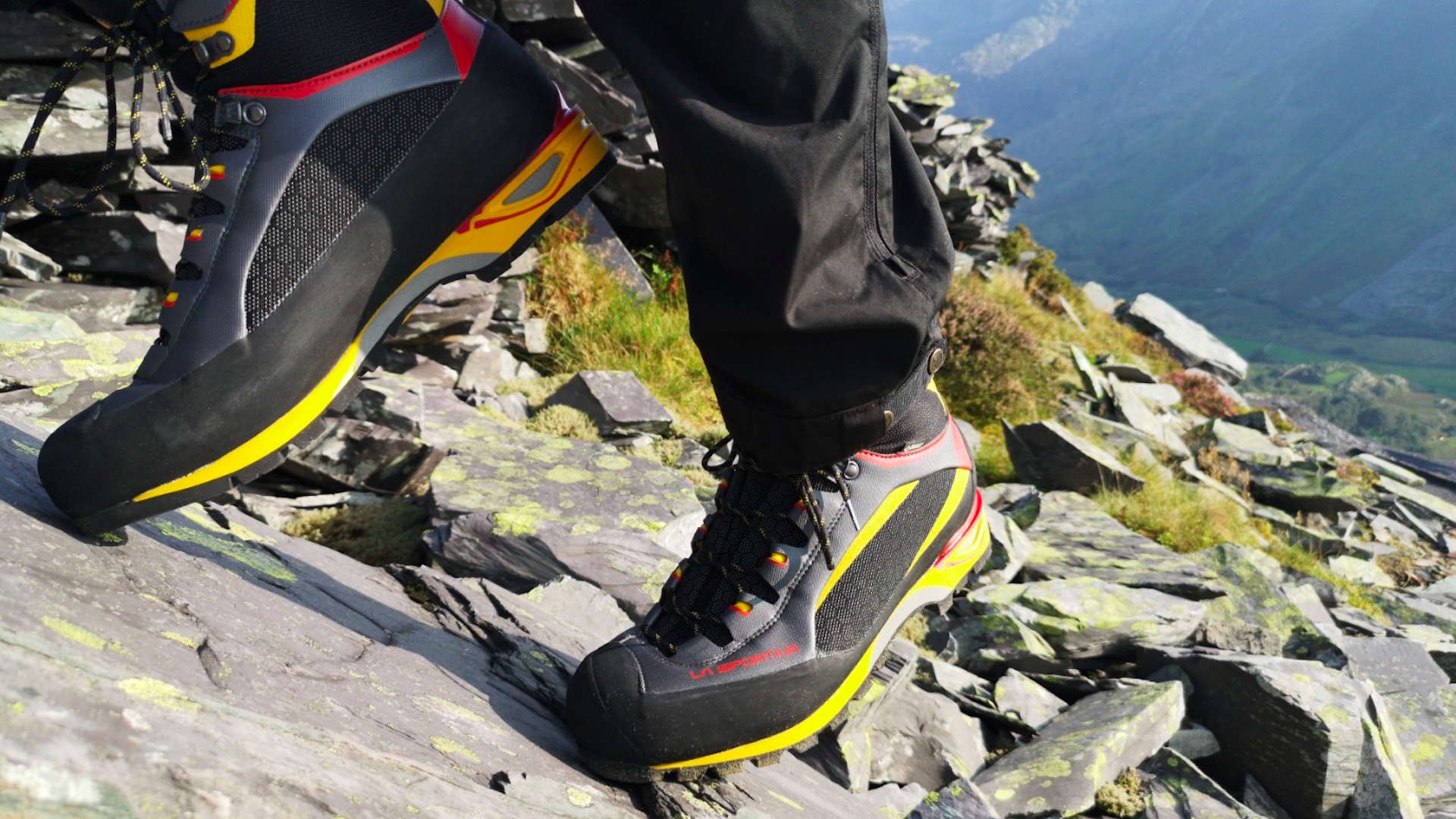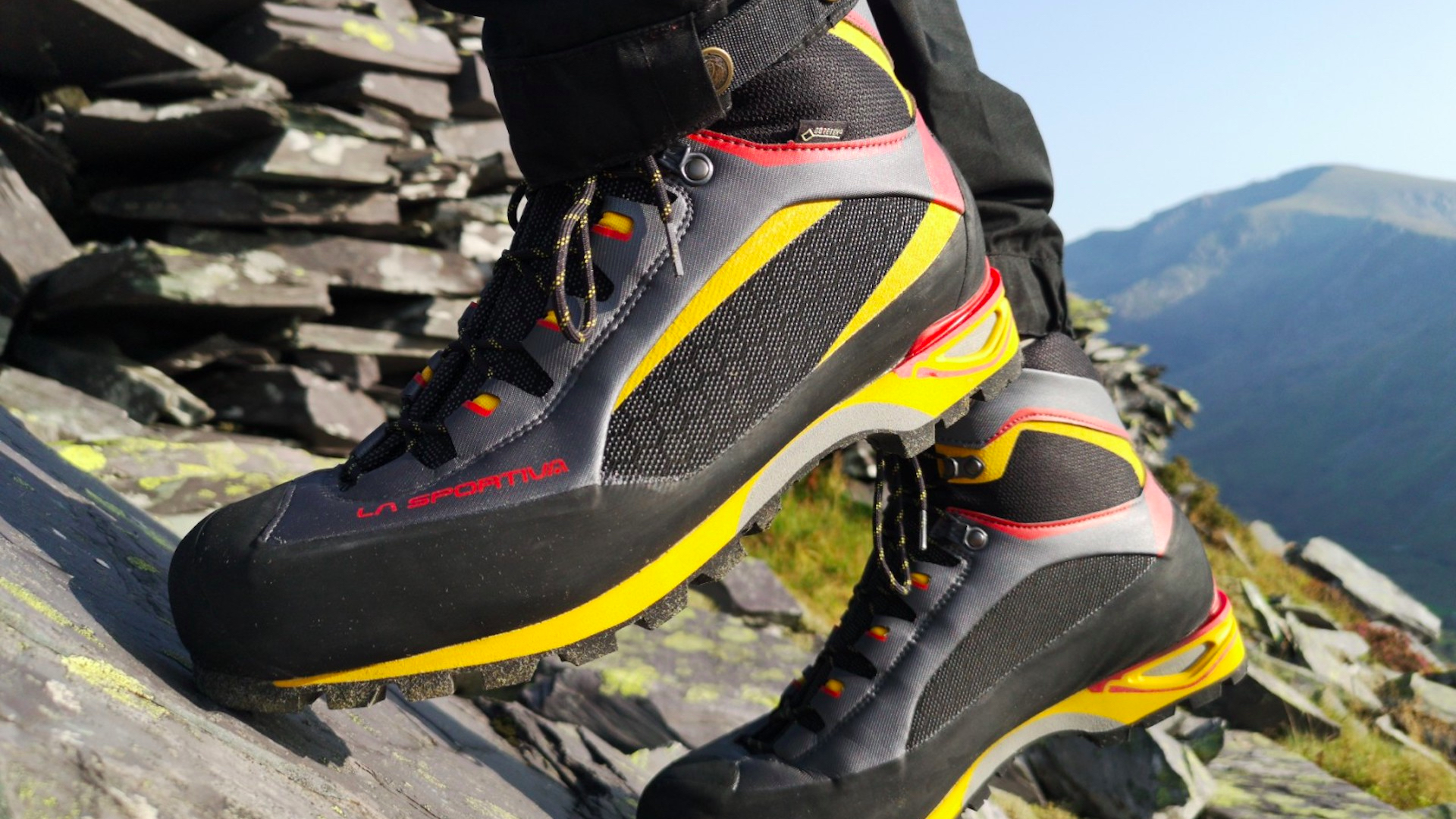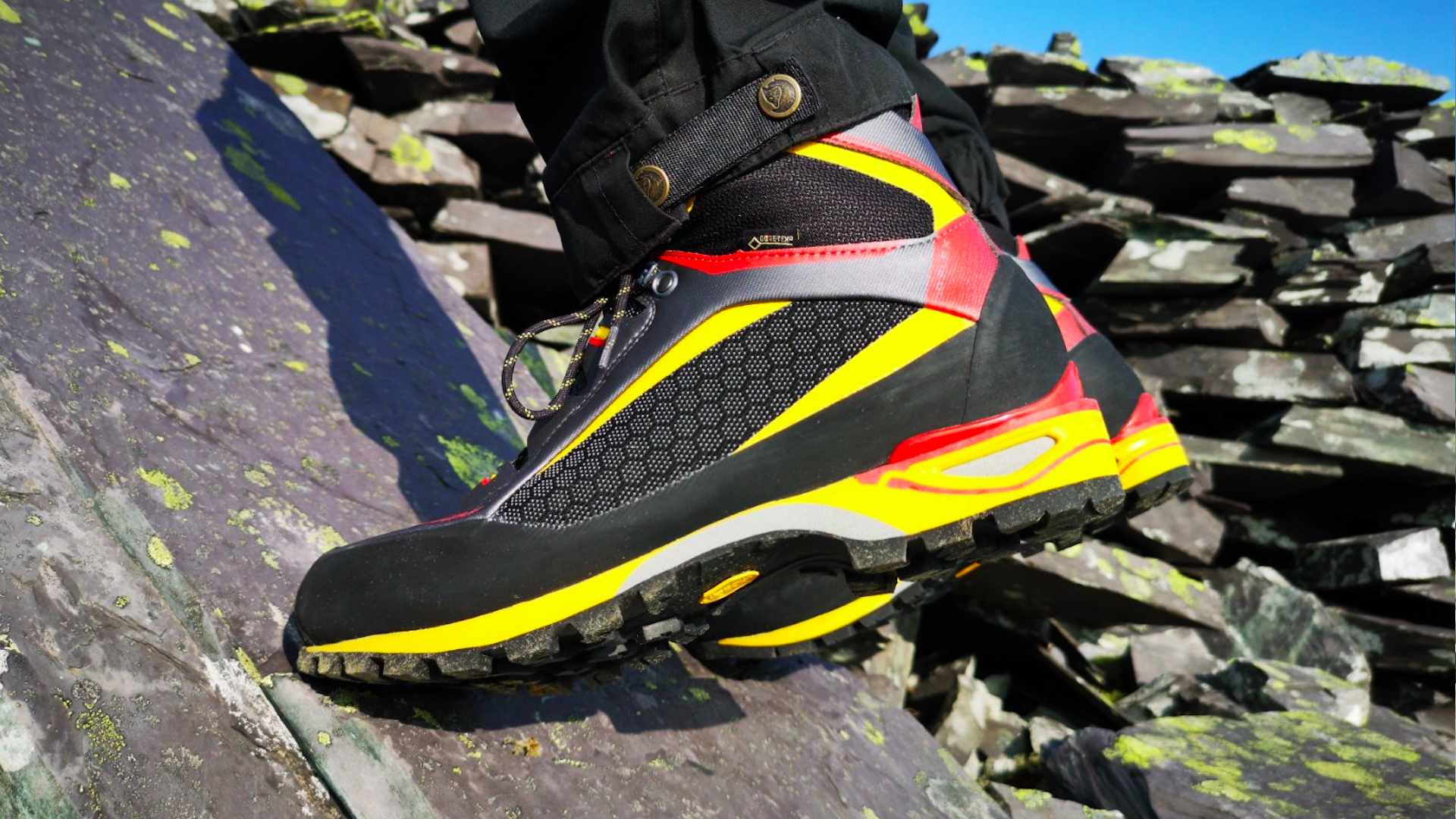Advnture Verdict
Arguably the most versatile mountain boot in the current range of La Sportiva’s famous Trango series, the Trango Tower is capable and comfortable – though not cheap.
Pros
- +
Lightweight
- +
Excellent grip
- +
Precise feel
Cons
- -
Outsole can wear quickly
- -
Not insulated
- -
Expensive
You can trust Advnture
La Sportiva Trango Tower GTX: first impressions
La Sportiva Trango Tower GTX boots have a lot to live up to. When it comes to serious mountain boots, La Sportiva’s Trango series is one of the most famous names in the game. Today, there is a whole raft of boots in the Trango line-up. The Tower sits comfortably in the middle of the range, being more technically capable than the hike and trek-focused Trango Tech or Trango Trek, and just below the “big mountain”-oriented Trango Cube or Trango Tower Extreme. However, the Trango Tower has a little more flex than either of the two latter models, making for a much more versatile and forgiving boot overall.
They are a B2-rated boot, which means they are compatible with a C2 semi-automatic crampon. That’s an ideal combo for taking on graded winter mountaineering routes. Despite offering a stiff and stable platform for crampons however, they are not so rigid that you can’t also wear them for general hillwalking and scrambling.
The uppers are synthetic rather than leather, which may put traditionalists off. But remember that this saves a fair bit of weight, makes them arguably easier to look after and means they don’t absorb water either.
And though fit is, of course, subjective, the Trango Tower is built on a relatively accommodating last that is available in half European sizes, which means you ought to be able to find a precise fit.
But how did they rate when took them out for some rigorous testing for our best winter hiking boots buying guide? Read on…
• RRP: £300 (UK) / €270 (EU)
• Sizes available: (EU) 38-47, (UK) 5-12
• Materials: High tenacity 6.6 Nylon with Honey-Comb Guard abrasion resistant zones and FlexTec 3 uppers, Gore-Tex membrane lining, La Sportiva Cube by Vibram outsole
• Weight (per boot): 745g / 1lb 10oz
• Colors: Black & Yellow / Neptune / Saffron & Goji / Olive & Neon
• Compatibility: Four season, B2
La Sportiva Trango Tower GTX: on the trails

We tested them on a range of classic mountain scrambles in Snowdonia, North Wales – a region known for its variable conditions, particularly in winter. The Trango Tower is a nimble and precise boot, providing stability and adept technical performance on wet or icy rock and snowy slopes.
Performance is as good as anything else out there in its class, particularly when it comes to traction and feel underfoot. La Sportiva’s Cube outsole is exclusively made for them by Vibram. It sticks to rock impressively well, providing reassuring grip and strong edging capability. The one downside is that it is known to wear quickly. However, the Trango Tower is resoleable, which is likely to cost you about £85 – not cheap, but less than a third of the cost of a new pair (see also: how to resole hiking boots).
All the latest inspiration, tips and guides to help you plan your next Advnture!
Here’s how they performed in each of the key metrics by which we gauge a hiking boot’s performance (find more on these in how to choose a pair of hiking boots):
Comfort
These boots proved far more comfortable out of the box than most B2s. We took them straight into the hills and found they needed next to no break-in period (for tips see: How to break in hiking boots). Though they lack the deluxe padding of some heavier boots, they caused no rubbing or soreness around the ankle cuff, and the cushioned tongue means there are no pressure points across the top of the foot even when tightly laced. The cutaway rear section give plenty of freedom and relives pressure on the Achilles tendon, which is a real benefit on longer walk-ins and approaches.
Underfoot, they are obviously fairly stiff, but didn’t cause too much fatigue. As with almost all B2s, the addition of a specialist insole greatly helped in this regard. Unlike the higher-spec models in the Trango range, these boots lack any insulation – their only real drawback when it comes to cold-weather comfort. On the other hand, this makes them versatile enough to wear outside of full winter conditions too. And with a thick pair of mountaineering socks, we were fine even with snow on the ground.
Fit
La Sportiva footwear is known for being fairly narrow, though the Trango series is built on a relatively accommodating mountain boot last rather than the close lasting of the brand’s climbing/approach shoes or their trail-running footwear. The boot is also available in half European sizes, which makes it much easier to find a precise fit compared to UK or US brands that only do full or half UK/US sizes. (See also: How should hiking boots fit?)
Performance
These boots perform brilliantly across a range of mountain terrain. The Cube outsole is made by Vibram exclusively for La Sportiva, and is highly regarded – rightly so, as it offers perhaps the best and most reliable traction of any B2 boot on the market. It features a front climbing zone at the toe for good contact grip on small ledges and pockets too, ensuring reliable edging performance. Its major downside, as noted already, is that it is known to wear quickly. If you’re a yomper used to putting in big mile days, these perhaps aren’t the right choice for you. But for shorter technical mountain days – ridge or gully scrambles and graded winter climbs for example – they’re ideal.
Indeed, they’re just as capable with a C2 crampon fitted, attaching securely with no slippage to our Grivel G12 s and Black Diamond Seracs.
For a stiff B2 boot, they’re also reasonably comfortable to walk in, with just enough flex in the forefoot for easy striding.
Weight-wise, they’re towards the middle of the pack for B2 boots. Of course, when the Trango S first appeared, it was pretty revolutionary, being the first truly lightweight mountain boot. But other brands have caught up since then, and if you want a lighter La Sportiva model than this, you’ll have to downgrade to the less capable and more hiking-focused Trango Trek. Still, the Tower is comparable to similar models in its class, and it is still significantly lighter than all-leather alternatives.

Protection
The Gore-Tex lining offers reliable breathable waterproof protection even in snow and ice. The fact that the synthetic uppers soak up next to no water also aids overall performance and stops these boots from feeling too cold, even in winter conditions – though it’s still worth wearing a heavyweight mountaineering sock in low temperatures.
The toecap and all-around rand do a good job of fending off most debris while guarding against scrapes and nicks. You also get decent protection when kicking snow steps.
Durability
Initially we weren’t sure that the synthetic uppers would guarantee brilliant long-term durability, particularly compared to all-leather B2 boots. But actually, despite the use of these lighter materials, the Trango Tower has so far proved to be durable enough for rock, snow and ice. The panels incorporate very little stitching too, which is a major plus for durability, as there are fewer potential failure points.
So, although they’re not cheap, you should get your money’s worth here, especially if you give them a little regular TLC at the start and end of each winter season.
An outdoors writer and editor, Matt Jones has been testing kit in the field for nearly a decade. Having worked for both the Ramblers and the Scouts, he knows one or two things about walking and camping, and loves all things adventure, particularly long-distance backpacking, wild camping and climbing mountains – especially in Wales. He’s based in Snowdonia and last year thru-hiked the Cambrian Way, which runs for 298 miles from Cardiff to Conwy, with a total ascent of 73,700 feet – that’s nearly 2½ times the height of Everest. Follow Matt on Instagram and Twitter.


